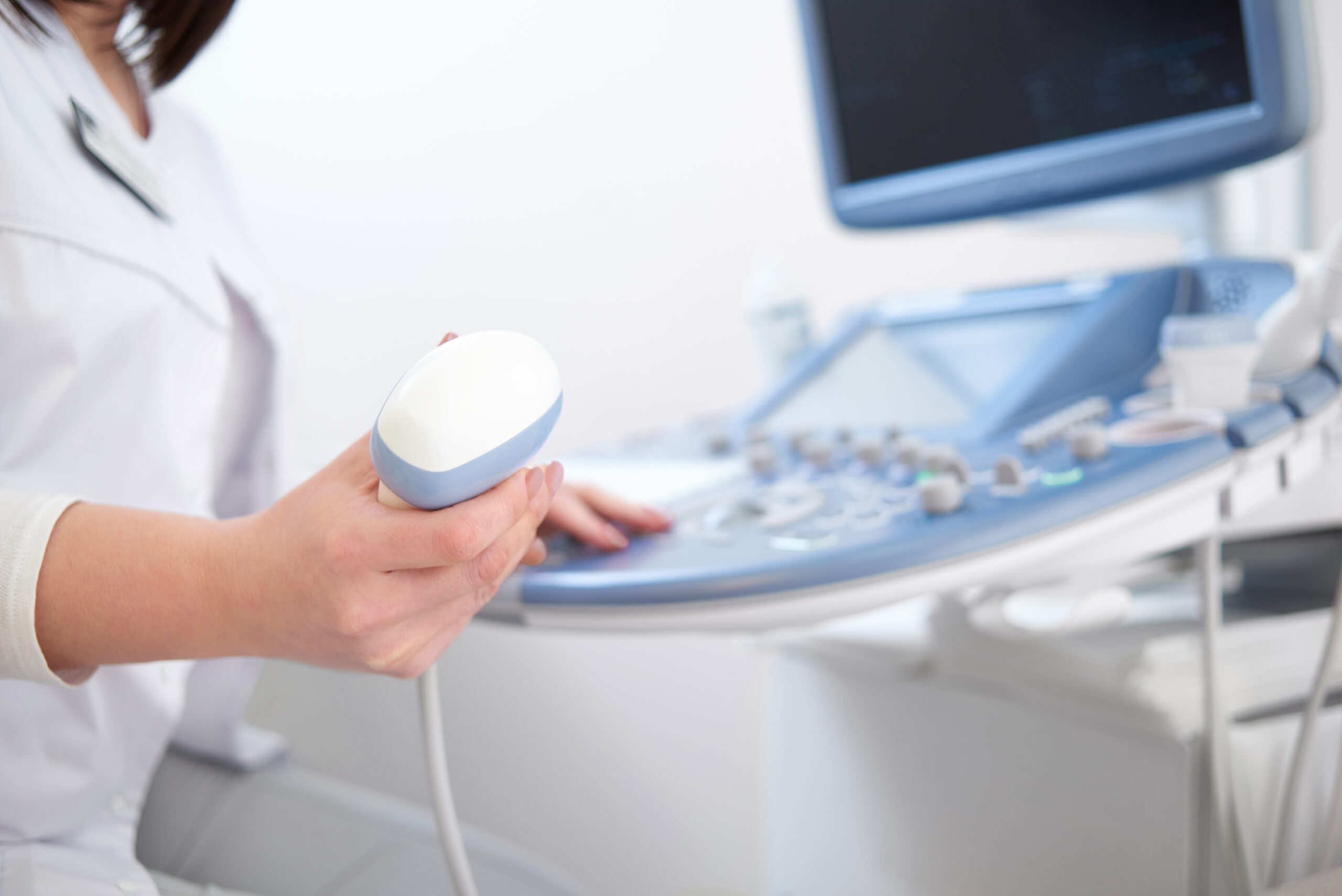Ultrasound plays a crucial role in obstetrics and gynecology by providing valuable information about the reproductive system, pregnancies, and gynecological conditions. It is a safe and non-invasive imaging technique that allows healthcare providers to monitor the health of both the mother and the developing fetus. Here’s how ultrasound is used in obstetrics and gynecology:
Obstetric Ultrasound:

Healthcare professionals use obstetric ultrasound to monitor pregnancies, assess fetal development, and ensure the well-being of both the mother and the fetus. Here are some key uses of obstetric ultrasound:
Confirming Pregnancy: USG can confirm the presence of a pregnancy, detect multiple pregnancies (twins, triplets, etc.), and estimate the gestational age.
Fetal Development: USG helps monitor the growth and development of the fetus, including assessing the size of the fetus and its organs.
Fetal Anatomy Scan: Around 18 to 22 weeks of pregnancy, a detailed ultrasound is performed to assess the fetus’s organs and structures.
Detecting Birth Defects: USG can identify certain birth defects, anomalies, or genetic conditions.
Assessing Amniotic Fluid: USG helps evaluate the volume of amniotic fluid around the fetus.
Placental Position: USG determines the position of the placenta and any related concerns.
Monitoring Fetal Well-Being: Doppler ultrasound assesses blood flow in the umbilical cord, helping evaluate the fetus’s well-being.
Healthcare professionals use ultrasound to guide procedures such as amniocentesis and chorionic villus sampling.
Gynecological USG:
Gynecological USG assesses the health of the female reproductive organs and diagnoses gynecological conditions. In pelvic examinations, healthcare providers employ it to visualize the uterus, ovaries, fallopian tubes, and surrounding structures.
Detecting Ovarian Cysts and Tumors: USG helps identify the presence, size, and characteristics of ovarian cysts or tumors.
Assessing Uterine Abnormalities: USG can reveal conditions like uterine fibroids, polyps, and structural abnormalities.
Evaluating Endometrial Thickness: USG measures the thickness of the uterine lining. Endometrial thickness can be useful for assessing conditions like endometrial hyperplasia.
Monitoring Ovulation: USG can track follicle growth and predict ovulation in fertility treatment.
Guiding Procedures: Ultrasound-guided procedures include biopsies, aspirations, and drainage of cysts.
Postmenopausal Evaluation: USG helps assess postmenopausal bleeding and any potential gynecological issues.
Assessing Infertility: USG can help identify factors contributing to infertility, such as blocked fallopian tubes.
Ultrasound is an essential tool in obstetrics and gynecology. USG allows healthcare providers to monitor pregnancies, diagnose gynecological conditions, and ensure the overall reproductive health of women. It provides valuable insights that guide medical decisions and ensure the best possible care for both pregnant individuals and those with gynecological concerns.


